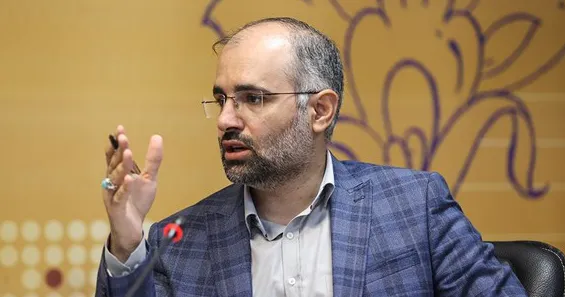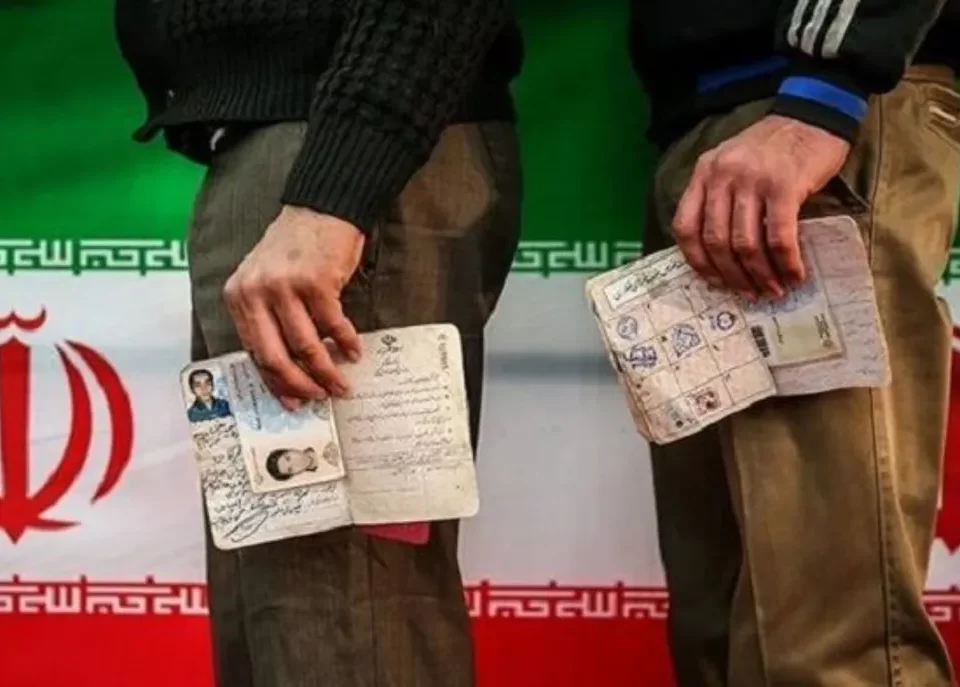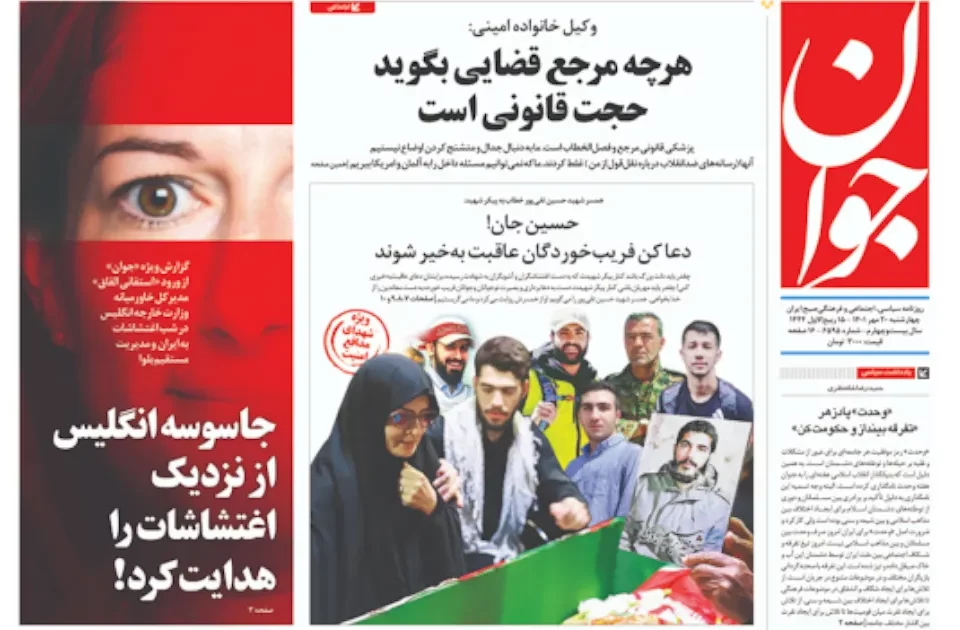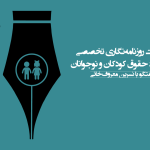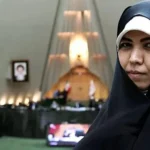“Jews have the same rights as Muslims in the Islamic Republic!”
This was one of the many claims made by Homayoon Sameh Yeh Najafabadi, a Jewish MP and representative of the Jewish community in the Iranian parliament, in a recent interview with the state-controlled Young Journalists Club. During the discussion, the chair of the Tehran Jewish Committee insisted his community was adequately represented in Iranian politics and in receipt of all its dues – except when it wasn’t.
Najafabadi has long been criticized by outsiders as a “decorative element” on Iranian state architecture. Religious minorities’ representatives play a role in legitimizing the wider regime, travelling abroad and hosting parties in a bid to show that the Islamic Republic is not in fact brutally hostile to all but the Shia Persian majority.
During the interview at Yousefabad Synagogue on Monday, May 17, Najafabadi was invited to talk about the benefits minorities including Jews enjoy in contemporary Iran. The reporter asked him: “The law dictates the number of representatives for each constituency, but do you think the number of the Jewish MPs should be increased?”
The Jewish MP replied: “For every 300,000 people, on average, there should be one representative in parliament, while the [Iranian] Jewish community numbers about 15,000. This is a privilege the Constitution has given to religious minorities and a clear symbol of its care for the human rights of religious minorities in Iran.”
The reporter then omitted to ask what would have been the obvious follow-up question: only 15,000? Has the Jewish population always been this small?
The answer, of course, is no. In 1979 the Iranian Jewish community numbered 80,000 to 90,000 at a time when the total population was 34 million. But due to the “care” shown to them by the Islamic Republic, from bureaucratic discrimination to high-profile executions, tens of thousands of Jews emigrated in the aftermath of the Islamic Revolution.
Had the Jewish population kept on growing at the same rate as the wider population, Iranian Jews would number 200,000 today. Instead, contrary to Najafabadi’s claim, the 2019 census found there were around 9,800 Jews left in Iran and he himself has previously claimed they only number around 9,000.
Nothing to See Here
The next question the YJC reporter did put to Najafabadi was a judicious one. “What is the relationship of the Iranian Jewish community with the Jews of other countries?”
And: “As an MP with a history of cultural representation of the Jewish community and chairman of the Committee, how do you act in this regard?”
Despite the week of violence that has engulfed Israel and the Palestinian Territories, none of the questions put to Najafabadi directly referenced Israel – which in any case, Iranian state media reporters never call by its name. This was the closest the interview came to touching on the issue, and the answer that came was similarly opaque.
“The policy of the Tehran Jewish Committee and the [Iranian] Jewish community,” Najafabadi said, “is to work on its own cultural and social issues, to seek support only from itself, and not to depend on foreign countries, not even Jewish communities abroad.
“My community’s relationship with outside is limited to family, relatives, and kinship-related issues. On cultural issues, the Iranian community is so strong it does not need others. In any case, there is a complete freedom for us to communicate with those abroad; we will do so if it is necessary.”
On the question of Jews’ rights as a religious minority group, Najafabadi was quick to reassure his audience: “There are not many judicial issues in the Jewish community. But when there are, I have to follow them up. My community has exactly the same rights as a Muslim has in the Islamic Republic. Even some of our Muslim compatriots face problems that should be pursued and resolved.”
It was a tangled response. Najafabadi seemed to be turning a blind eye to the fact that even Muslims in Iran lacking government associations, and of course Sunni Muslims, are deprived of many of their basic rights.
A Case Study in the State Media’s Mission
Propaganda is not always based on outright lies. Rather, (mis-)shaping public opinion by spreading misleading, contradictory and confusing information has long been a hallmark of the Islamic Republic’s media policy. This interview was exemplary in that regard.
According to the law, as Najafabadi correctly stated, there must be one representative for every 300,000 people in the Iranian parliament. In practice this has not been observed for a long time, and some cities with a population far greater than this do not have a single MP acting on their behalf.
The Jewish community, whose size was seemingly overestimated even by its own MP, has one seat in parliament. On the face of it, this would indeed appear to be a kind concessionary gesture to one of Iran’s oldest religious minority groups. But again, in practice, Najafabadi’s presence is a cosmetic one and he exists to whitewash any discrimination this group and others suffer in Iran. Among the other remarks Najafabadi made during the interview were:
“Thank God, our community has no problem performing religious duties, teaching religious sciences and carrying out other personal matters.”
“There are synagogues, our schools are open and religious sciences are taught. We have enjoyed the collaboration of the serving government, the Ministry of Education and the holy system of the Islamic Republic.”
“Every request we had from the government has eventually been fulfilled. Maybe not 100 percent, but at least 50 percent.”
“This community operates in various professions and thank God, has no problems in its economic activity… We may have some complaints about recruitment issues, but overall, our community lives comfortably in Iran.”
The first two statements are deflated by an appeal to the known record. There are five Jewish schools left in Tehran, with mandatory Muslim principals and limited Hebrew textbooks, and just 35 synagogues across the country. In the second two, Najafabadi contradicted himself in a matter of seconds.
Elsewhere in the interview, he simply evaded questions related to his duties as an MP. One part of the interview ran as follows:
Young Journalists Club: How much do you know about the tampering of budget figures in parliament?
Najafabadi: I have no specific information.
Young Journalists Club: You mean you have no information?
Najafabadi: I have some information. There is a lot of talk, but I have to go and research it and then I’ll then talk to you.
Young Journalists Club: When can we follow up with you?
Najafabadi: In due course! When I finish my research, I’ll contact you myself! What is important to me is the budget for religious minority communities, which, thank God, has not changed, and we thank them, and it has been implemented.
Young Journalists Club: So it hasn’t changed? Because they claim the budget has increased.
Najafabadi: Of course, the budget for religious minorities has increased, and this increase occurred during the approval of the budget in parliament. The Budget Committee helped a lot in this regard and it was finally implemented. Thank God, after several years, we received the funds that were allocated to the Jewish constituencies in Iran in the budget of 2020-2021.
Thank God! At least the Jewish community has been allocated the funds it was due – which have reportedly been both left unchanged and increased – in the budget this year.
Media literacy dictates that whatever information we receive, we scrutinize not only the content but the outlet that published it. In not merely contriving to shape public opinion, but to encourage the public to accept anything he said regardless of what preceded it, Najafabadi’s recent interview bore all the hallmarks of the worst kind of disorientating propaganda.
Published at Iranwire (English Version)
Published at Iranwire (Persian Version)


